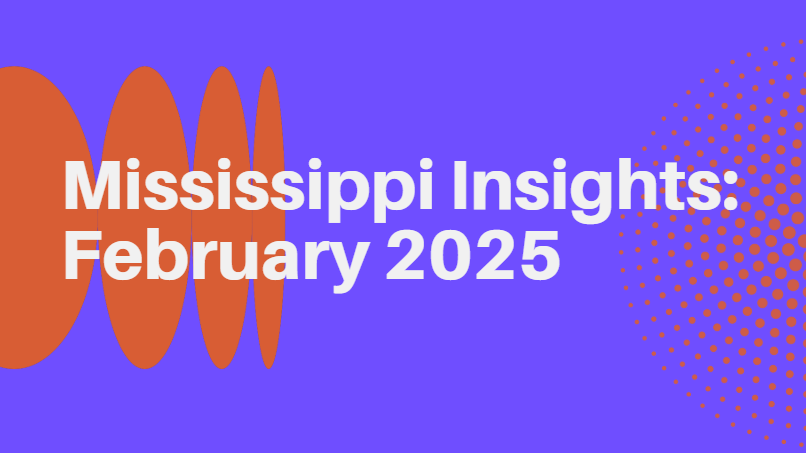
Implications for the MS Cannabis Industry in 2025
An analysis of the cannabis industry’s performance in 2024 offers valuable insights and projections for businesses preparing for 2025. Understanding last year’s trends and challenges helps you strategically prepare for success in the year ahead. The report highlights market growth, product performance, and patient trends for navigating the cannabis industry in 2025.
Summary
HelloDank delivers actionable insights to its users, enabling data-driven decision-making and supporting long-term success. By providing localized and industry-specific analytics, HelloDank equips businesses with the tools needed to thrive in a competitive and evolving cannabis market.
Key findings include significant growth of the MS program, retail sales trends, and the importance of product mix in optimizing profit margins. While flower remains the market leader, concentrates offer higher profit potential, presenting opportunities for targeted sales strategies.
Wholesale pricing gaps highlight differences between small brands and large operations, stressing the need for tailored, data-driven strategies. By leveraging localized insights and industry benchmarks, businesses can better evaluate performance and refine strategies to remain competitive.
The data for this analysis was sourced from the MMCP, HelloDank, and publicly available datasets. To enable meaningful comparisons, the data was standardized, providing a clear and accurate view of market trends and performance benchmarks.
2024 brought both excitement and challenges for the industry. Following a significant recall in late 2023, the lingering effects extended well into 2024. Despite this, the MS program grew 60% in 2024, ending the year with 49,626 patients. However, this number remains below what is needed to optimize product and retail efficiencies.

Retail Sales Overview
Retail sales for 2024 totaled $96,550,032, marking a 117% increase from the previous year. It’s important to note that the program was not active throughout all of 2023, and the ramp-up of patient numbers fueled much of this growth. Whether these trends will sustain into 2025 remains uncertain. Ideally, if patient numbers grow by another 30% (adding nearly that same number of patients YoY), reaching 64,513 by year-end 2025, retail sales are projected to hit $125,513,485 under those growth conditions.

Projected retail sales have been analyzed under three patient growth scenarios: suboptimal (15% growth rate), realistic (30% growth rate), and optimal (60% growth rate). The corresponding sales projections for 2025 are $111 million, $124 million, and $154 million, respectively. These projections are based on the assumption that average patient spending remains consistent with current levels and that no significant changes occur in supply or demand dynamics. Growth is anticipated to stabilize between 15% and 30%, assuming no new market catalysts are introduced.
Seasonal Trends in MMCEU Purchases
State reports revealed a decline in MMCEUs purchased during Q4, following a peak in Q3. While traditional retail sales typically see a boost during Q4 due to holiday shopping, cannabis sales appear to have an inverse relationship with the season.
This may be attributed to patients prioritizing holiday gift spending over medical cannabis products. Additionally, Q4 saw an increase in retail prices, which might have limited patients’ abilities to purchase as many units as in previous quarters.
Market Breakdown
Flower continues to dominate the market, accounting for over 60% of all sales. While concentrates represent only 1.4% of retail sales, they boast the highest profit margins per unit. Focusing on upselling concentrates can boost profitability, especially with unit caps in effect. Completely switching to concentrates could boost profits by $471 per patient compared to flower. These figures may vary by location, but understanding profit margins per unit remains critical to maximizing patient purchase potential.
Although concentrates may have a lower markup percentage, their higher price points can significantly enhance overall profitability. Given the finite number of units available to patients, it is essential for retailers to optimize profit per unit to maximize revenue.

Benchmarks for Retail Profitability
According to our data, the average profit per unit per transaction across all product types is $18.23. With an average of 2.53 units sold per transaction, the average retail profit per transaction stands at $46.96. While these numbers will vary by store, they provide a useful benchmark to evaluate individual retail performance relative to state averages.
Wholesale Pricing Discrepancies
State data reports an average wholesale price of $11.42 per unit for flower, while our data shows a higher average of $18.01 per unit. This discrepancy may be attributed to state data being weighted towards Big Box brands, which prioritize high volume and justify lower unit prices. In contrast, our data focuses on small brands with lower volumes but higher perceived quality. This trend holds true across various product categories.
HelloDank and the Role of Data-Driven Strategies
Small and independent cannabis businesses can benefit greatly from data-driven strategies to enhance decision-making and profitability. HelloDank provides localized data insights tailored to individual users, enabling them to monitor their brand’s performance. By comparing localized data with state averages from sources like MMCP, HelloDank, and others, businesses can evaluate their performance and implement strategies to stay competitive.
The following section presents wholesale pricing averages from various sources, including state-reported data, internal analysis, and publicly available information. By offering benchmarks for other state markets, HelloDank aims to provide businesses with a broader perspective on pricing trends and competitive positioning within the cannabis industry. When raw wholesale pricing information isn’t available, wholesale pricing estimates are computed based on generally accepted mark-up percentages.





Thank you for taking the time to read this report. If you have any questions or would like to discuss our findings further, don’t hesitate to reach out.